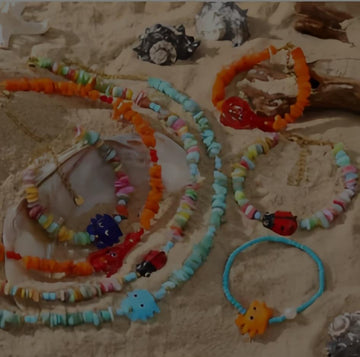Managing Maintenance Costs and Budgeting for Stone Bracelets
Stone bracelets, whether crafted from jade, quartz, or agate, require consistent care to maintain their aesthetic appeal and structural integrity. While professional services and specialized products can add up, adopting cost-effective strategies and preventive measures helps balance preservation with budget constraints. Below are practical approaches to managing maintenance expenses without compromising quality.
DIY Cleaning and Polishing Techniques
Reducing reliance on professional services by mastering at-home care can significantly lower long-term costs. Consider these methods:
- Gentle Homemade Cleaners: Mix mild dish soap with lukewarm water to create a safe cleaning solution for most stones. Avoid harsh chemicals like bleach or ammonia, which can damage surfaces and require costly repairs.
- Soft-Bristle Brushes and Cloths: Use a soft toothbrush or microfiber cloth to scrub crevices and polish stones. These tools are inexpensive and reusable, minimizing the need for specialized equipment.
- Natural Oil Applications: For porous stones like turquoise or opal, apply a drop of jojoba or mineral oil to restore luster. This method is affordable and prevents the need for expensive re-polishing treatments.
Preventive Care to Avoid Costly Repairs
Proactive habits reduce the risk of damage that necessitates professional intervention. Incorporate these practices into your routine:
- Proper Storage Solutions: Invest in a jewelry box with soft-lined compartments or individual pouches to prevent scratches and tangling. This avoids the expense of replacing broken clasps or restringing beads.
- Avoiding Environmental Hazards: Store bracelets away from direct sunlight, extreme temperatures, and humid environments to prevent fading, cracking, or mold growth. These steps mitigate the need for restoration work.
- Safe Wear Practices: Remove bracelets during physical activities, gardening, or household chores to avoid collisions that could chip stones or loosen settings.
Strategic Use of Professional Services
While DIY methods are cost-effective, some tasks require professional expertise. Optimize spending by prioritizing these services:
- Annual Inspections: Schedule yearly check-ups with a jeweler to assess settings, prongs, and clasps. Early detection of loose stones or worn components prevents costly replacements.
- Selective Restoration: For heirloom or high-value pieces, consult a professional for repairs like restringing, re-tipping prongs, or refinishing surfaces. Focus on preserving structural integrity rather than cosmetic enhancements.
- Educating Yourself: Learn basic jewelry repair skills, such as tightening clasps or replacing jump rings, to handle minor issues at home. This reduces reliance on paid services for simple fixes.
Balancing Quality and Affordability in Supplies
Choosing cost-efficient yet reliable materials for maintenance extends the lifespan of your bracelet without overspending:
- Reusable Cleaning Tools: Opt for washable microfiber cloths and reusable brushes instead of disposable wipes or single-use products.
- Neutral pH Cleaners: Use pH-balanced soap or specialized jewelry cleaners sparingly. Overuse of chemicals can strip stones of natural oils, leading to more frequent treatments.
- Protective Coatings: For stones prone to staining or drying, apply a temporary sealant every 6–12 months. This reduces the need for deep cleaning or stone replacement due to damage.
By combining DIY efforts, preventive care, and strategic professional services, you can manage the maintenance costs of stone bracelets effectively. Prioritizing long-term preservation over short-term savings ensures your pieces remain beautiful and durable for years to come.







